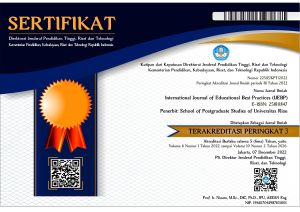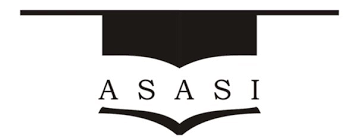THE DEVELOPMENT OF ASSESSMENT INSTRUMENT USING TESLET MODELS IN STEREOCHEMISTRY MATERIALS
DOI:
https://doi.org/10.31258/ijebp.3.1.29-42Keywords:
development, assessment instrument, teslet model, stereochemistryAbstract
Stereochemistry is the study of molecules in three-dimensional space regarding how atoms in a molecule are arranged in one room relative to the other. Stereochemistry is a difficult course. Therefore, it is necessary to diagnose the difficulty of learning using the testlet model. This study is aimed at developing an appropriate testlet model for the assessment instrument. This research uses the development model of Borg and Gall's assessment instrument with ten stages, but this research is limited to the fifth stage only, namely 1) Research and Information Collection, 2) Planning, 3) Develop Preliminary Form of Product, 4) Preliminary Field Testing, and 5) Preliminary Product Revision. The data collection techniques were in the form of validation questionnaires from expert teams and students' response questionnaires. The data analysis technique used qualitative and quantitative data. The qualitative data were from the results of a review of validation by a team of experts who are Postgraduate Lecturers of Chemistry Education at Universitas Riau and lecturers of the Chemistry Education Study Program at the Faculty of Tarbiyah and Teaching at UIN Suska Riau. The quantitative data were obtained from the calculation of the mean scores of the validation questionnaire by two lecturers of the Postgraduate of Chemistry Education at Universitas Riau and one lecturer in the Chemistry Education Study Program at the Tarbiyah Faculty and Teacher Training at UIN Suska Riau as the experts. The results of the study show that the mean score of validation from the expert team is 3.97 on the aspect of material with valid category, 3.97 on the aspect of construction with valid category, 3.88 on the aspect of language with valid category; and the results of the students' response questionnaires are 51.58 on the time readability questionnaire and 8.08 on the aspect of time adequacy.
References
Arifin, Zaenal. (2009). Evaluasi Pembelajaran. Bandung. Remaja Rosdakarya.
Arikunto, S. (2014). Prosedur penelitian suatu pendekatan praktek. Jakarta. Rineka Cipta.
Arikunto, S. (2016). Dasar-dasar evaluasi pendidikan. Jakarta. Bumi Aksara.
Arsyad, Azhar (2000). Media Pengajaran. Jakarta. PT Raja Grafindo Persada.
Borg, W.R. & Gall, M.D. (1989). Educational Research: An Introduction, Fifthy Edition. New York.Longman.
Dimyati & Mudjiono. (2009). Belajar dan Pembelajaran. Jakarta. PT Rineka Cipta.
Djamarah, S.B. (2002). Psikologi belajar. Jakarta. Rineka Cipta.
Levi Nahum, Havi Hofstain, Rachel Mamlock-Naaman & Zira Bar-Dov. Can Final Examinitions Amplify Student’ Misconception in Chemistry. Journal Chemistry
Education: Research and Practice. Vol 5 No 3 Pp.301-325. Israel.The Weizmenn Institue of Science, Deparment of Science Teaching.
Putra, Nusa. (2015). Research & Development. Jakarta. Rajawali Pers.
Ralp, J. Fessenden & Joan S. Fessenden. (1982). Kimia organic edisi ketiga. Jakarta. Erlangga.
Indah Tri Wahyuni, Sri Yamtinah, Budi Utami. (2015). Pengembangan Instrumen Pendeteksi Kesulitan Belajar Kimia SMA Kelas X Menggunakan Model Testlet. Jurnal Pendidikan Kimia (JPK), Vol. 4 No. 4 Tahun 2015. Surakarta. UNS.
Suwarto. (2013). Pengembangan tes diagnostik dalam pembelajaran panduan praktis bagi pendidik dan calon pendidik. Yogyakarta. Pustaka Pelajar
Sri Yamtinah, Haryono, Kus Sri Martini. (2014). Profil Individu Peserta Didik Pelengkap Tes Jenis Testlet Sebagai Alternatif Pendeteksi Kesulitan Belajar Kimia. Jurnal Profesi Pendidik. Volume 1, Nomor 1, November 2014. Surakarta.UNS.
Syamsudin, A. (2002). Psikologi Pendidikan: Perangkat Sistem Pengajaran Modul. Bandung. PT Ramaja Rosdakarya





